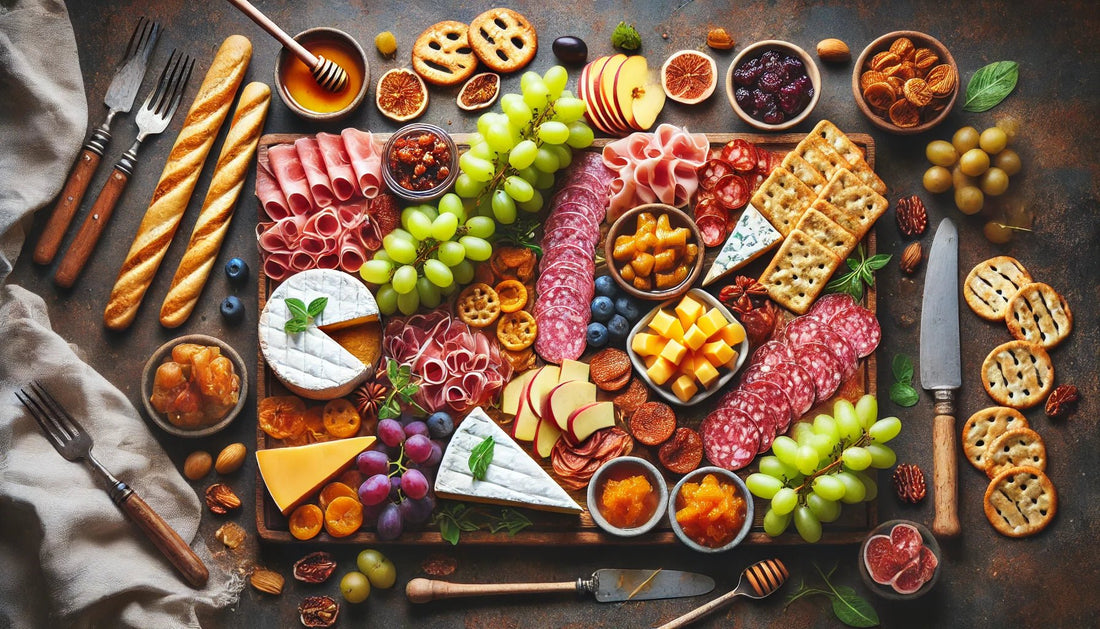
What is the 3-3-3 rule for charcuterie board?
Share
Understanding the 3-3-3 Rule for Charcuterie Boards
Creating the perfect charcuterie board can be an art form, blending various flavors, textures, and colors into a delightful spread. If you're new to assembling charcuterie boards, the 3-3-3 rule is a simple yet effective guideline to help you create a balanced and visually appealing board. This rule ensures you have a variety of elements that cater to different tastes and preferences. Let's break down the 3-3-3 rule and how you can apply it to your next charcuterie creation.
What is the 3-3-3 Rule?
The 3-3-3 rule involves including three types of meats, three types of cheeses, and three types of accompaniments. This rule provides a structured approach while allowing enough flexibility to incorporate your personal preferences and seasonal ingredients.
1. Three Types of Meats
Cured meats are the backbone of any charcuterie board. When selecting your meats, aim for a variety of flavors and textures. Here are some popular choices:
- Salami: A classic choice with a robust and slightly spicy flavor.
- Prosciutto: Thinly sliced and delicate, offering a subtly sweet taste.
- Chorizo: A spicier option that adds a kick to your board.
2. Three Types of Cheeses
Cheese adds a creamy and tangy element to your charcuterie board. Selecting a mix of cheese types ensures a range of textures and flavors:
- Soft Cheese: Brie or Camembert, which are creamy and rich.
- Semi-Hard Cheese: Gouda or Cheddar, which offer a firmer texture and a range of flavors from mild to sharp.
- Hard Cheese: Parmigiano-Reggiano or Manchego, known for their intense flavors and crumbly texture.
3. Three Types of Accompaniments
Accompaniments are the extras that complete your charcuterie board, providing balance and variety. Consider including:
- Fruits and Nuts: Fresh grapes, apple slices, dried apricots, and nuts like almonds or walnuts.
- Crackers and Bread: Artisan crackers, toasted baguette slices, and breadsticks.
- Condiments and Spreads: Honey, mustard, fig jam, or marinated olives.
Assembling Your Charcuterie Board
Now that you have your three types of meats, cheeses, and accompaniments, it's time to put it all together. Here are some tips for assembling your charcuterie board:
- Start with the Larger Items: Place your cheeses and small bowls of condiments first. This helps create a foundation and structure for your board.
- Add the Meats: Arrange your meats around the cheeses, folding or fanning them out to add visual interest.
- Fill in the Gaps: Use fruits, nuts, crackers, and bread to fill in any gaps. This not only adds variety but also ensures the board looks abundant and inviting.
- Garnish: Fresh herbs like rosemary or thyme can add a touch of color and aroma to your board.
Tips for Success
- Balance Flavors and Textures: Ensure a mix of salty, sweet, creamy, and crunchy elements to cater to different tastes.
- Consider Dietary Restrictions: If you know your guests' dietary preferences or restrictions, include options that everyone can enjoy.
- Presentation Matters: An attractive presentation can elevate your charcuterie board. Use different shapes and sizes of ingredients to create visual interest.
Conclusion
The 3-3-3 rule is a fantastic guideline for building a well-rounded and appealing charcuterie board. By including three types of meats, cheeses, and accompaniments, you can create a board that offers a delightful variety of flavors and textures. Whether you're a charcuterie novice or a seasoned pro, this rule helps simplify the process while ensuring a delicious and impressive spread. So, next time you're preparing a charcuterie board, remember the 3-3-3 rule and enjoy the art of creating a perfect platter. Happy entertaining!
